First Ride | New and Improved? Kawasaki's 2024 Brute Force 750 LE EPS
The Big Green Mean Machine Received a Well-Deserved Facelift in 2024
In a world that is currently dominated by the SxS market, many people think that manufacturers have forgotten about the die-hard ATV enthusiasts who prefer to have their fun with their hands on handlebars over a steering wheel. The powers that be at Kawasaki realized this and gave new life to a tried and true platform. No, we’re not talking about reviving the KFX 450 (although, we'd love to see it). Instead, we’re talking about their flagship utility ATV, the mighty Brute Force 750. But what we need to find out is if the upgrade was worthwhile. Challenge accepted, as the Brute Force messaging says…
Some may think Kawasaki is being left in the dust by the likes of other brands which are at or breaking the 1000cc barrier. However, this couldn’t be farther from the truth. Sure, those machines serve a great purpose for adrenaline junkies or backwoods overlanders. But those aren’t the riders Kawasaki is targeting. The person for whom this machine was built wants quality components, great handling capabilities, plenty of usable power, comfortable for longer days, and no lack of fun, be it a ride for work or for pleasure.
Those particular needs are exactly why the Brute Force 750 came to fruition and was, now, redesigned. Equipped with a 749cc V-Twin, the vehicle provides enough power to push, pull, or haul anything you need transported. The large bore, 9.3:1 high compression pistons produce ample torque, and the Electronic Fuel Injection (EFI) system delivers the fuel through twin 36mm throttle bodies to ensure the mighty motor won't miss a beat at any altitude or temperature where you might be riding.
To send the power to the ground, Kawasaki utilizes a rigid double-cradle frame which has been reinforced at crucial mounting points like at the A-arms, engine, rear stabilizer, and more. Mated to the motor is a compact yet tough CVT transmission delivering precise, smooth, and efficient power. When the terrain becomes tough, riders can go from 2WD, 4WD, or 4WD with rear differential lock by a simple flip of a switch at the instrument cluster. When you need more traction, Kawasaki has integrated a variable front differential control which riders engage with a finger lever on the left side of the handlebars.
To provide a smooth ride, the Brute Force 750 is equipped with double-wishbone control arms at all four corners, utilizing five-way preload-adjustable shocks offering 6.9” of travel up front and 7.4” in the rear. This suspension along with the new 25” CST tires on 12” aluminum wheels give the Brute Force 9.6” of ground clearance, which should be good enough for most recreational enthusiasts. To ensure riders can stop as fast as they can accelerate, twin 200mm rotors mated with dual-piston brake calipers are used up front, while the rear is equipped with a sealed internal wet brake protected from all of the elements.
One of the finer upgrades Kawasaki has made to this model in its lifetime has been the Electronic Power Steering (EPS) system. Employing input from speed and torque sensors, the EPS control unit not only determines a precise amount of assist necessary at all speeds but also acts as a steering damper to reduce bump steer and kickback to the bars and, subsequently, riders' arms. The quad also comes equipped with a trailer hitch bracket with a 1,250 lb. towing capacity and is ready to accept a 3,000 lb. winch with a mounting bracket designed into the chassis and factory-installed wiring loom.
New For 2024
When I attended Kawasaki’s Dealer Meeting earlier this year, there was plenty of excitement when an announcement stated that the Brute Force 750 was receiving some well-needed upgrades for 2024. As much as I was hoping to see things like higher-quality shocks, maybe a little more power or even some extra travel, those improvements just weren’t in the cards (for now). What was updated were styling and electronics. Fresh front and rear fenders now bring a modern, aggressive look to the 750 which, in my opinion, really improved the aesthetic.
A winch cover matching the grill is to hide the vacant space when no winch is installed, and this especially improves the attractiveness of the machine so you are not left with some awkward vacant space. LED headlights and reimagined a taillight design add to the overall "mean" appearance, while vastly improving visibility at night. This is especially true with the introduction of a handlebar mounted LED headlight that provides a much needed spotlight moving in-sync with your every turn.
Furthermore, the new Brute Force comes with a 4.3” full-color, TFT handlebar mounted display, offering a contemporary feel while providing critical internal information such as speed, fuel level, warning lights, and more. The rider can choose from black or white backgrounds, and the unit can automatically adjust brightness so the last thing you worry about at night is being blinded by the meter. Housing for the TFT features three accessory slots to control aftermarket installed items like a winch switch or other electrical accessories operated with a rocker. The final feature worth noting are the factory-installed hand guards. While it might not seem like much of an "upgrade", they are a welcome addition if you’re ever riding in cold, wet, or congested conditions.
A couple attributes that Kawasaki put a lot of thought into are the new plastic rack covers. These items come standard on the EPS and LE models and boast a stout load capacity of 88 lbs. up front and 176 lbs. in the rear. These racks provide multiple slots for accessories deploying the Kawasaki Quick Release (KQR) system in addition to grooves integrated into the rear rack so, for example, you could carry full 5-gallon buckets which can be found at the local hardware store. With the many of these slots available in the rack, tying the buckets down while they’re in the groove should make them extremely secure.
Does It Feel Different?
To do some real-world testing on the updated Brute Force, Kawi invited me to a full day of riding on their redone rig. The location was Richfield, UT which offered endless trails varying from fast forest service roads to tight technical ascents and descents, all leading up to an elevation of over 9,000 feet. At that time of year, a storm had recently passed, dropping a significant amount of snow at the higher elevations which we were sure to encounter as well. Upon arriving at the staging area, we all caught a glimpse of the new units waiting to be taken out on the trails. First impression: these updates really made the Brute Force 750 look sharp. The angular body lines and streamlined headlights give it that much-needed facelift.
As big as these machines are, one thing I noticed that seemed a bit out of place were the 25” tires on 12” wheels. I’m guessing I’ve become accustomed to a few of the other utility options on the market which come standard with larger tires and 14” wheels. The Brute Force in comparison appears a tad smaller at first glance and definitely sits lower because of this detail. Is this something you can change? Of course. Just be mindful of the ground clearance as things could quickly become tight whenever changing the factory-provided wheel or tire sizes. Other than that, nothing else really stood out to me as unfavorable. So, that must be a good sign.
It had been some time since I’ve ridden a Brute Force, 2012 if I remember correctly, and not much has changed. All of the controls and ergonomics suited me well, and sitting on the machine felt more like sitting in it, which is how I prefer to ride. In the brisk morning temps, the 749cc engine roared to life without a hiccup, and we were on our way. The initial routes were fast and filled with switchbacks and loose gravel showcasing the 750's maneuverability in 2WD.
Flipping the switch engaged 4WD seamlessly, which kept the ATV more planted and pulling through the corners. Not my favorite form of handling as my fun comes from steering with the rear end. I will say that there was no lack of power whenever you wanted it though. This engine has always been a true powerhouse and honestly, in this platform, it doesn’t need more than it has. It’s on these faster roads that the smaller tires of the machine likely helped in the performance department by giving it a low center of gravity.
To ensure we were able to test out other features of the BF 750, our guides took us on some steep off-camber descents, where the machine performed well. It’s not as wide as some of the other machines in its class and, admittedly, didn’t feel quite as stable, though the ride didn't procure any uneasy sensations. It just wasn’t as comfortable or intuitive as others could be.
With enough experience, anyone piloting this more modest beast could easily intervene over obstacles, adding the missing balance to the ride with their own physical inputs. As we continued on our cruise up the mountain, it was easy to see we were making significant gains in altitude when the patches of snow alongside the roads turned into deep embankments and snowdrifts on the road which we occasionally blasted through.
The group leader came to a stop so our crew could regroup at an intersection of the route which exposed very few tracks. While some unsaddled to stretch their legs and take photos, a handful of us decided to explore the area and play on some of the white-washed trails. Using 4WD with the differential lock was crucial to obtain maximum traction when the skid plate started scraping the deep snow. Activating the front differential helped even more, but I will say that I’d much rather have an electronic actuated unit over a manual, cable operated one like that on the Brute Force. It works, but it’s just something I’d rather not have to think about doing. And while it's a more generic, all-terrain design, the CST tires did fairly well in the deep snow, and, honestly, I don’t think that a more aggressive tread would have added benefit in any of the conditions we’d experienced thus far.
Moving onto our next location involved even more climbing. This time less snow was involved but it presented looser terrain and steeper angles. This is where I really got a feel for the suspension as the landscape was far more rugged than what we’d yet experienced. My one big gripe about this machine is that when I last rode the Brute Force 750, Kawasaki had just gone with the five-way preload adjustable shocks. Where that machine was tested, I had jumped off a few of the water breaks in the trail and found the Brute would blow through the stroke of the shock rather quickly and bottom out. This experience had felt pretty harsh on my body and caused a loud sound through the ride.
Yet, here we are in 2024 with the same shocks and that same feeling. I understand this machine isn’t meant for jumps, but I don't believe what I'd put it through was excessive beyond its presumed capability. However, this was not something I'd encountered with other ATVs of its kind put through the same situation. All that to say, these shocks are adequate for work and general recreational riding, but if you want to ride more aggressively, you’ll likely want to replace your suspension system.
It's not all bad. The engine and EPS continued to steal the show with the tight turns and steep ascents on the trail. I didn't become tired or fatigued despite the constant back and forth on the bars. The 750 also never lost control when riding down the rougher trails at speed. The EPS did exactly what it was meant to do. And while we managed to test most aspects of the machine, there were a few items that didn't get addressed. Aside from looking very cool, we didn’t have the opportunity to see the full value of those new LED head and taillights. But, anything is better than a halogen setup, frankly, and you just can’t go wrong with a handlebar mounted light.
Better Than Before?
That’s the million dollar question. And the answer is "yes"...and "no". If you’re looking at performance, this is the same Brute Force 750 that I rode 12 years ago. Which isn't a bad thing! I have been a longtime fan of this platform. It’s strong, comfortable, reliable, versatile, and just plain fun to ride. I can be in the saddle all day and not feel like I’ve been in the saddle all day, if you know what I mean. Is there room for improvement in the suspension and chassis department? Absolutely. Making changes to widen the Brute Force footprint, and increase suspension travel and ground clearance would be great, but according to Kawasaki engineers this would require a complete overhaul. And, honestly, it might be time for that. Or, maybe the 750 remains in a class of its own, and something completely different will come to fruition? Kawi has been hinting at more than a dozen new/updated vehicles across the board for 2025.
Now, if you’re content with the aforementioned, you’ll love the electronic and cosmetic features added for this year. The body styling is on point, LED lights are a great insertion no matter the vehicle, and the new rack covers will make life easier for use at work and at play. While I played on the Brute Force 750 LE Camo ($11,999) all day, the base model of the Brute Force 750 is available in Timberline Green, and the MSRP starts at $9,999. This barebones model won’t feature EPS and will only come with the TFT display, LED lighting, and updated body styling. You also have the Brute Force 750 EPS ($11,399) and the Brute Force 750 EPS LE ($11,999) trims to choose from.
All in all, Kawasaki's 2024 Brute Force 750 is still a great machine for all the same reasons I’ve loved it in the past: fun, durable, reliable, functional, and simple. Although, I must say that times have changed, and perhaps we could encourage Kawasaki to consider more than cosmetics updates to their already respectable ATV. Because even when we've hit the mark, there’s always room for improvement.
More by Eli Madero

















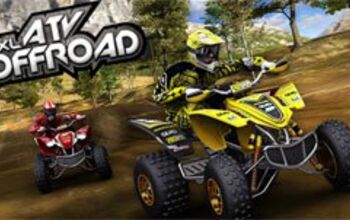




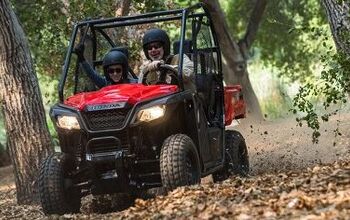
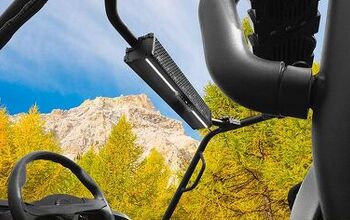



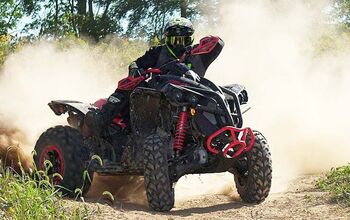

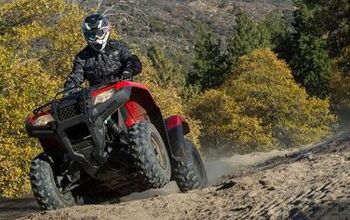
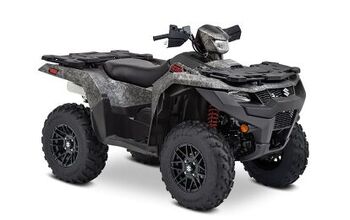
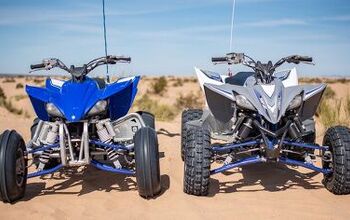


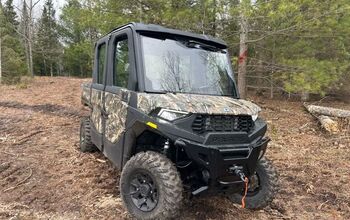
Comments
Join the conversation